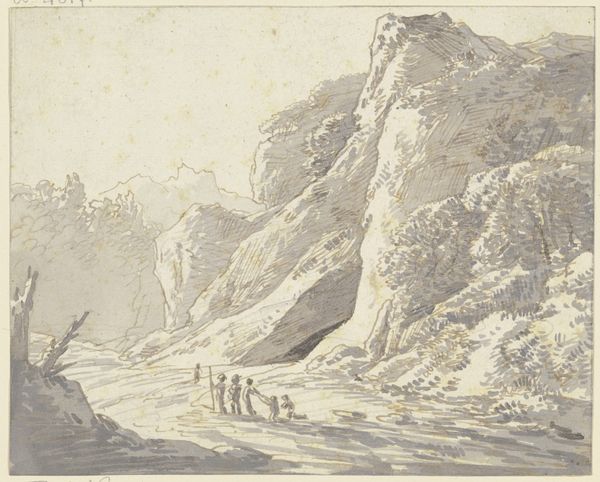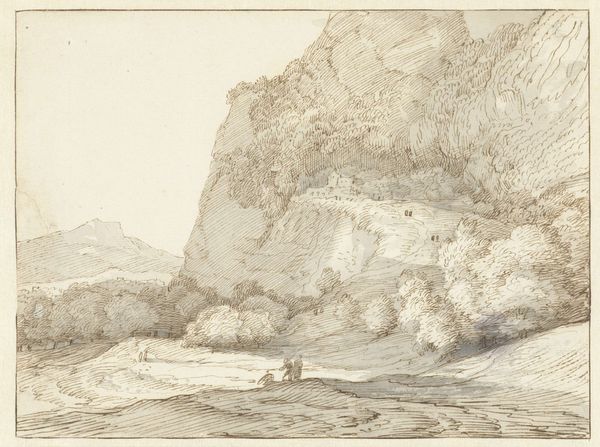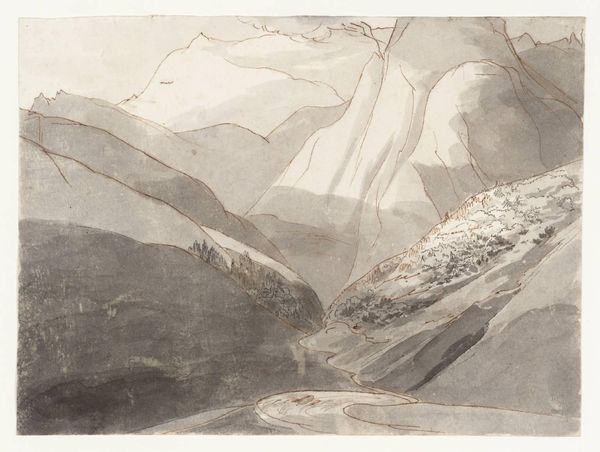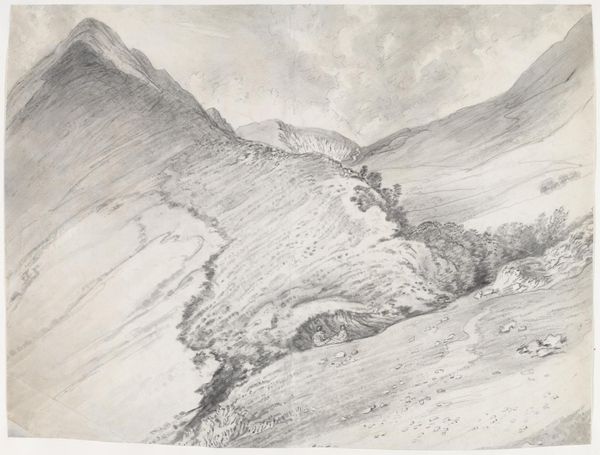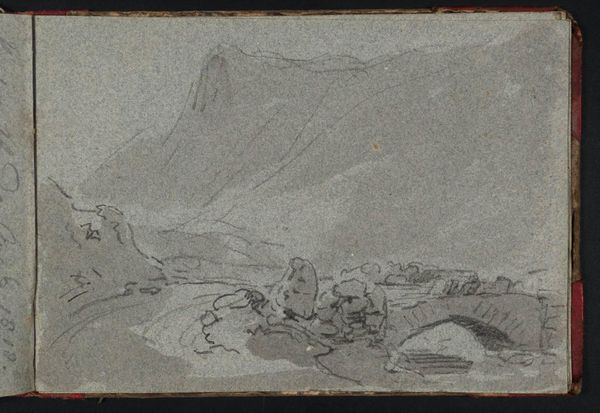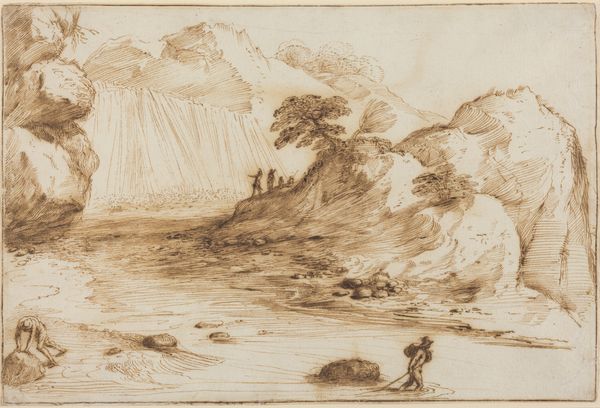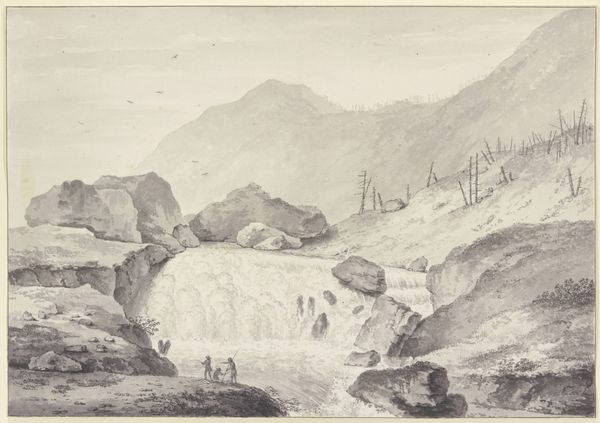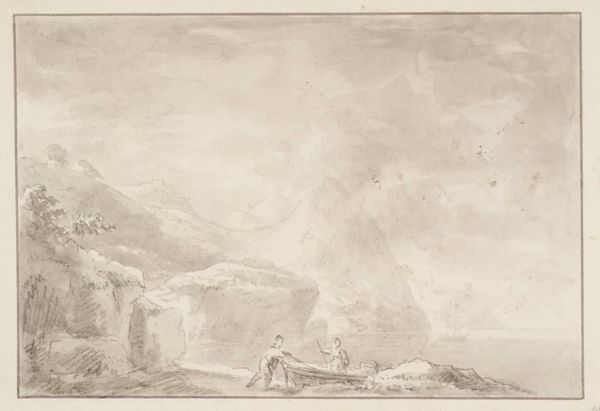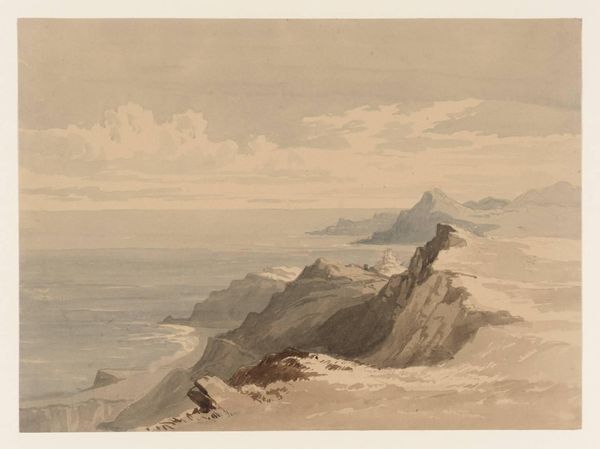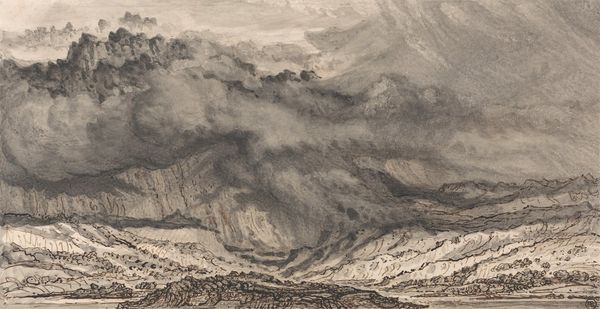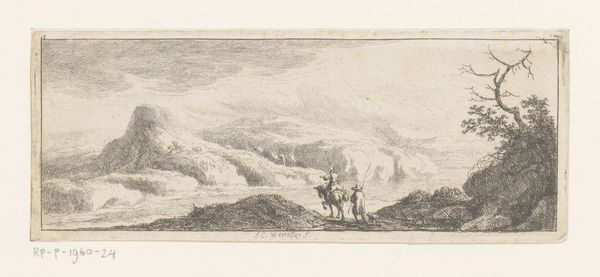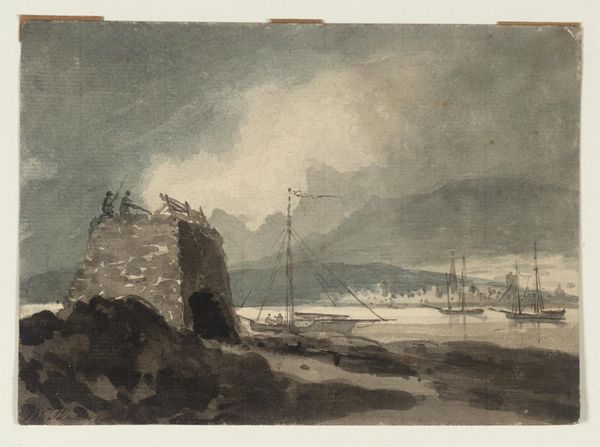
Copyright: Rijks Museum: Open Domain
Curator: This drawing, housed at the Rijksmuseum, is titled "Figuren op een pad langs een rotskust," or "Figures on a Path Along a Rocky Coast," created by Petrus Johannes Schotel sometime between 1841 and 1865. Schotel employed pencil, charcoal, and watercolor in its making. Editor: My first impression is of quiet resilience. The misty, muted tones evoke a kind of subdued determination as figures move along this daunting precipice. Curator: Indeed. There’s a delicate balance between the vulnerability of the tiny figures and the imposing mass of the landscape. Consider the Romantic era's emphasis on the sublimity of nature—nature's ability to inspire awe, even fear. That sheer cliff face looming behind the path amplifies this effect. Editor: I agree, and I wonder about the implications of placing people—presumably ordinary people—within that sublime context. It speaks to humanity’s relationship with its environment, especially if these walkers were marginalized in some way. Are they seeking refuge, perhaps? Or forging a new path against seemingly insurmountable odds? Curator: It’s certainly open to interpretation. But observe how Schotel utilizes very faint lines of pencil sketch underneath and charcoal drawing. He almost erases the human presence with the subtlety of the rendering, suggesting their lives might be but a transient blip in geological time, dwarfed by something with greater importance. Editor: That might actually speak more to the class structures of the period, though. Was the artist thinking about which lives, which stories, get centered or disappear? Consider how gendered assumptions or racist presumptions of who is even capable of claiming ownership of space might make certain people seem faded in historical records. The mist may well erase the memory of some stories and emphasize the prominence of others. Curator: Perhaps. Art has power over time and, therefore, memory. Though whether such sociopolitical commentaries were the primary objective of Schotel in his artistry remains speculative, the visual language gives power to his Romantic landscape as well. The figures can certainly symbolize resistance against the overpowering dimensions of time and landscape. Editor: Precisely, the piece encourages us to question who and what we memorialize and to recognize the strength required to traverse paths made precarious by systemic injustice. It is beautiful because of how open the artist was able to allow an inclusive understanding, with more questions than answers for each viewer, regarding an awareness for that memory over time.
Comments
No comments
Be the first to comment and join the conversation on the ultimate creative platform.
